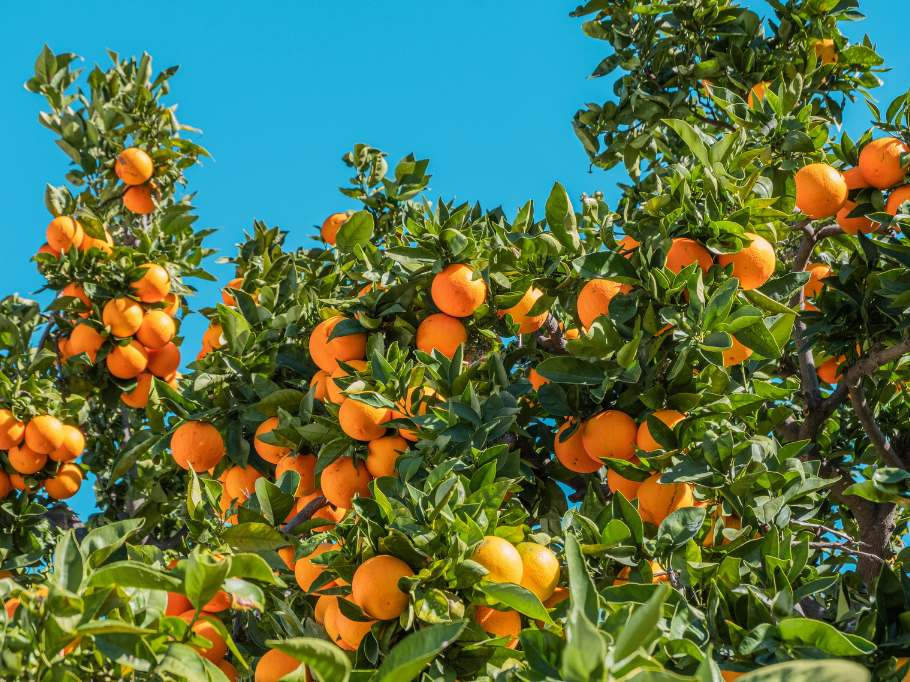Acid reflux, also known as heartburn, is a common condition that affects millions of people. It occurs when stomach acid flows back up into the esophagus, causing a burning sensation in the chest or throat. While occasional acid reflux is normal, chronic acid reflux can lead to more serious health issues, such as gastroesophageal reflux disease (GERD). One of the main triggers of acid reflux is the food we eat. Here’s a look at some common foods that can cause acid reflux and tips on how to manage your diet to minimize discomfort.
1. Citrus Fruits
Citrus fruits like oranges, lemons, grapefruits, and limes are highly acidic and can trigger acid reflux symptoms. The high acid content can irritate the lining of the esophagus and increase stomach acid production, leading to heartburn.
If you love citrus fruits, try limiting your intake or choosing less acidic fruits like bananas, melons, or apples instead. You can also dilute citrus juices with water to reduce their acidity.
2. Tomatoes and Tomato-Based Products
Tomatoes are another highly acidic food that can cause acid reflux. This includes not just fresh tomatoes, but also tomato-based products like pasta sauce, ketchup, and salsa.
Opt for non-tomato-based sauces, like pesto or Alfredo, and be mindful of how much ketchup or salsa you use. If you still want to enjoy tomato-based dishes, try reducing portion sizes and pairing them with less acidic foods.
3. Spicy Foods
Spicy foods, such as those seasoned with hot peppers, curry, and chili powder, are known to trigger acid reflux in many people. The heat from these spices can irritate the esophagus and cause a burning sensation.
If you’re prone to acid reflux, consider reducing the spiciness of your meals or opting for Reflux Gourmet. You can experiment with milder spices like cumin, coriander, or ginger to add flavor without the heat.
4. Fried and Fatty Foods
High-fat foods, including fried foods like French fries, fried chicken, and onion rings, can relax the lower esophageal sphincter (LES), which is the muscle that prevents stomach acid from flowing back into the esophagus. When the LES is relaxed, it’s easier for acid to escape, leading to reflux.
Choose baked, grilled, or steamed options instead of fried foods. Incorporate more lean proteins, such as chicken breast or fish, and healthy fats from sources like avocados, nuts, and olive oil.
5. Chocolate
Chocolate is a common trigger for acid reflux because it contains both caffeine and theobromine, which can relax the LES. Additionally, chocolate is high in fat, which can further contribute to reflux.
If you can’t resist chocolate, try limiting your intake to small portions or opt for dark chocolate, which contains less fat and caffeine than milk chocolate. Alternatively, satisfy your sweet tooth with fruits like berries or a small amount of honey.
6. Caffeine
Caffeinated beverages like coffee, tea, and energy drinks can cause acid reflux by relaxing the LES and increasing stomach acid production. Even decaffeinated coffee can trigger symptoms in some people due to its acidity.
If caffeine is a trigger for you, try switching to herbal teas or decaffeinated beverages. Be mindful of how much coffee or tea you consume, and consider drinking smaller amounts throughout the day instead of large quantities at once.
7. Alcohol
Alcoholic beverages, particularly wine and beer, can increase acid production in the stomach and relax the LES, making it easier for acid to flow back into the esophagus.
Limit your alcohol intake and avoid drinking on an empty stomach, as this can exacerbate acid reflux symptoms. If you do choose to drink, consider having a glass of water between alcoholic beverages to dilute the alcohol and reduce its impact on your stomach.
8. Carbonated Drinks
Sodas, sparkling water, and other carbonated beverages can cause the stomach to expand, increasing pressure on the LES and leading to acid reflux. The carbonation can also irritate the esophagus.
Reduce or eliminate carbonated drinks from your diet. Opt for still water, herbal teas, or non-acidic juices instead. If you crave the fizz, try drinking smaller amounts or letting the beverage sit until it’s less bubbly.
Tips for Managing Acid Reflux
While avoiding trigger foods can help reduce acid reflux, there are other lifestyle changes you can make to manage your symptoms. Eating smaller, more frequent meals throughout the day can prevent excessive pressure on your stomach and lower esophageal sphincter (LES), making reflux less likely to occur. It’s also important to avoid eating late at night, as lying down shortly after a meal can increase the risk of acid reflux; aim to finish eating at least two to three hours before bedtime to allow your body adequate time for digestion.
Maintaining a healthy weight plays a significant role in reducing acid reflux symptoms since excess weight can put additional pressure on your abdomen, causing stomach acid to push up into your esophagus. Additionally, elevating your head while sleeping by raising the head of your bed or using a wedge pillow can help keep stomach acid from rising during the night, providing relief and promoting better sleep quality. Incorporating these lifestyle adjustments alongside mindful eating can greatly minimize discomfort and improve your overall digestive health.
Conclusion
Acid reflux can be uncomfortable, but by being mindful of your diet and lifestyle, you can significantly reduce the frequency and severity of your symptoms. If you’re experiencing chronic acid reflux, it’s important to consult with a healthcare provider to rule out more serious conditions like GERD. By making a few simple changes, you can enjoy your favorite foods without the burn.









